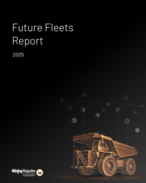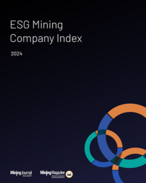It terms “value-add” as the value of outputs to inputs, and on this mark the oil and gas sector is a giant, contributing around 2% to national output.
With value-added of some $32 billion in 2012-13, PwC said its contribution to Australia’s economy was similar to that made by the agricultural industry which employs around 325,000 people.
In its Australian Petroleum Production and Exploration Association-commissioned report, PwC acknowledged that some commentators have been concerned that the expansion of the oil and gas – and the wider resources – sector poses some risks due to reduced diversification of the economy.
In its paper, produced as part of APPEA’s submission to the Energy Green Paper, PwC modelled a scenario where the terms of trade deteriorate to a lower level than estimated by the Treasury.
“Even with this deterioration we show that the economy continues to grow strongly with an annual growth rate of 2.8%, demonstrating that any lack of diversification risk is manageable given the adjustment mechanisms within the economy,” PwC said.
“Additionally, at current production levels, natural gas reserves will last at least 60 years, implying that capital investment in the sector can remain productively utilised over the long term and not be stranded.”
PwC’s analysis shows that for every dollar of production, the oil and gas sector adds 70 cents of value compared to an average of 49c for all other industries.
The PwC report found that the oil and gas industry’s annual contribution to Australia’s economic output was expected to more than double from $32 billion in 2012-13 to $67 billion by 2029-30.
APPEA CEO David Byers said all this shows that governments must focus on a long-term, market-based energy policy.
He said the Energy White Paper needed to focus on efficient and competitive markets, developing new energy sources to ease demand/supply constraints, regulatory reform and the need to remove unnecessary barriers to continued investment in oil and gas production.
“Australia’s abundant reserves of natural gas make it possible to meet our own and much of the region’s growing energy needs, particularly cleaner energy needs, over the coming decades,” he said.
“But we cannot take the industry’s success for granted. The policies developed through the White Paper process must ensure that Australia’s oil and gas explorers and producers are not disadvantaged against the producers of other energy sources here in Australia or overseas.”
PwC’s analysis noted that the current Australian industry composition was dominated by the services sector, with over 70% of industry output coming from service-orientated industries.
It expects Australia’s economy to continue its long-term trend towards services and sees a continued decline in the proportion of output from the manufacturing sector.
The services share in the economy has increased from roughly 60% in 1970s and PwC expects it to be 75% by the end of 2030.
PwC also believes Australia’s abundance of natural resources and strong export demand from Australia’s major trading partners has driven strong growth in the resources sector over the past decade.
“The resources sector’s share of the economy is expected to almost double from 7% in the 1970s to approximately 12% by the end of 2030,” PwC’s report stated.
At the start of the first phase of Australia’s resources boom, the manufacturing sector was the largest producing industry in Australia (11.9% of output), followed by financial and insurance services (7.8%) and the construction industry (7.1%). The mining sector was Australia’s 11th largest industry, comprising of 4.4% of national output.
Highlighting how much the tables have turned, PwC noted that increased activity in the mining sector driven by increased demand for non-rural commodity resources in the Asian region has seen resource allocation in the economy shift to the mining sector over the past decade.
“While mining and construction output increased strongly in response to the mining boom, the agriculture and manufacturing sectors share of the economy continued its 30-year decline,” PwC said.
“Over the past decade, annual average growth has been strongest in iron ore mining (11.7%), oil and gas extraction (6%), exploration and mining support services (5.7%) and construction (4.9%).
“The lowest growth rates were in the manufacturing sector, with textile and clothing
(-6.3%), printing and recorded media (-4%) and wood and paper product manufacturing (-3.1%) recording the weakest average growth rates.”























